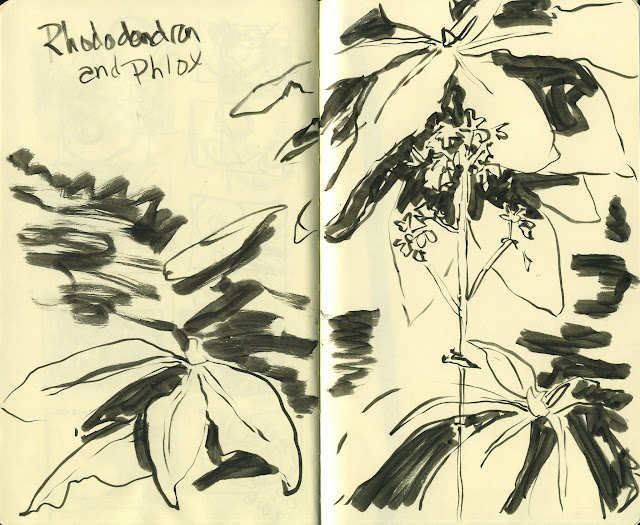In early April, I decided to work at my feeders when the goldfinches came in flock. I had an interesting experience.
It started with my not able to get anything down that resembled a bird--at least, that's how it felt to me. Warming up, measuring, trying to get proportions. I felt like suddenly I was reading a foreign language! I even wondered (I think I wrote it on one of the pages) if working from taxidermy and slow-moving housemates was dulling my ability to see quickly moving subjects. It was kind of an unpleasant feeling. Probably a lot of IC kicking in there.
BUT, I told myself I would not quit and that I would practice.
I allowed myself one "crutch" to kick myself out of it (you'll see it on the pages above, marked)--I took a few photos and using them camera display, with the birds still in front of me at the feeder, I took a few minutes to do a study of a head and a foot to try to ground myself, to get my hand and my head to connect again...
and while I have been carefully avoiding drawing from photos, this did work. Somehow, it jump started what wasn't syncing in my first drawings and when I went back to drawing from the live birds, I could catch them quickly and fairly accurately.
In the end I drew the two-page spread from the live birds (kind of made up a generalized wing pattern)... then later experimented with new Stabilo Woody pencils for coloring.
It was a GREAT drawing session not because of the pages but because of the notion that one can have bad days (or, at least, a bad 20 minutes) of drawing and if you keep with it, you can kick yourself out of it. I wound up happy with the whole experience, pleased with the work, and with pages that will remind me of perseverance and practice as much as of goldfinches.
I followed up the next week by talking about the creative process with my writing students! So much of creative making--no matter what the medium, the art, the goal--follows the same ups and downs!




































